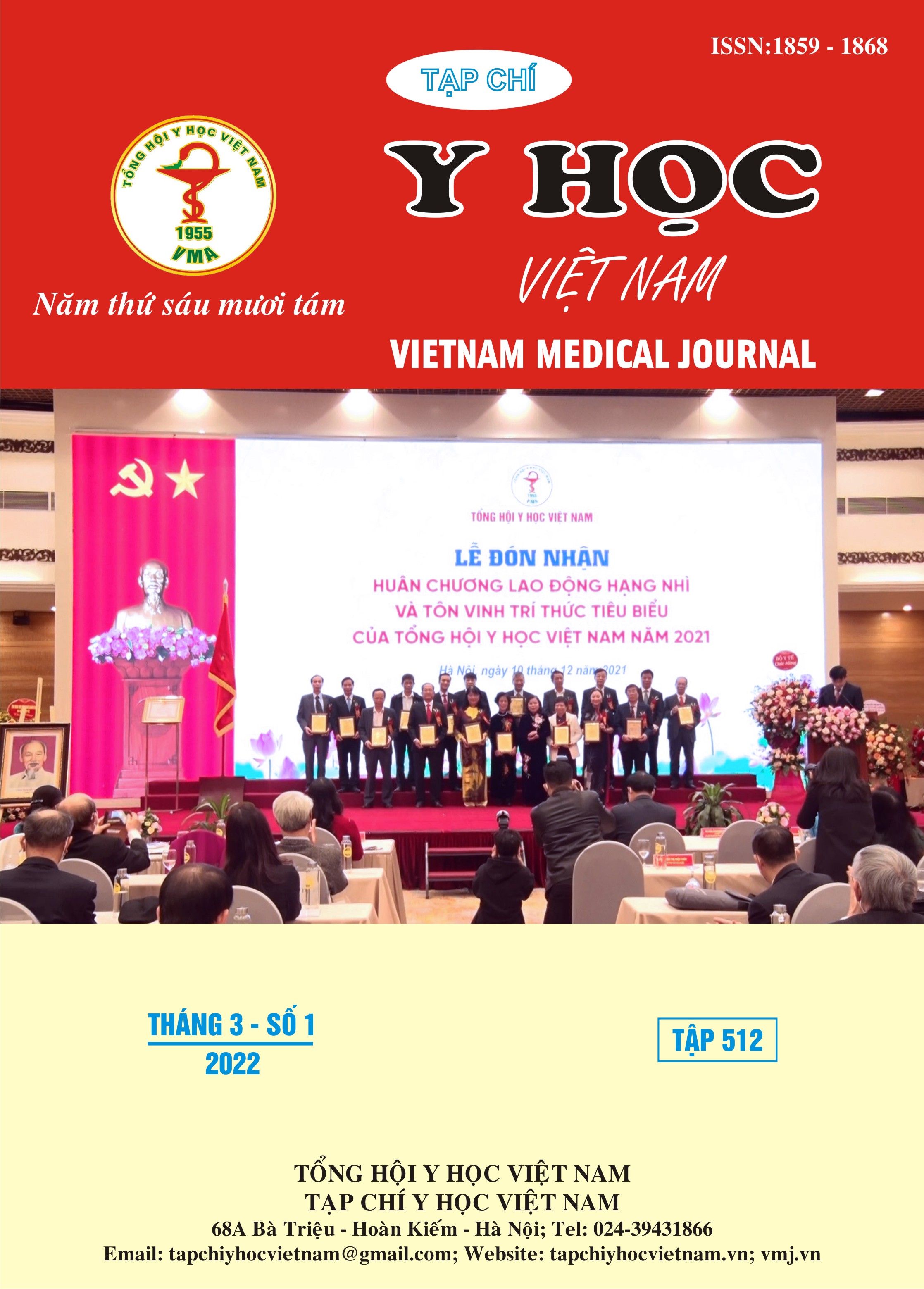INVESTIGATING THE ANATOMICAL FEATURES OF THE MAXILLARY ARTERY IN THE INFRATEMPORAL FOSSA
Main Article Content
Abstract
Background: The maxillary artery is the largest branch of the external carotid artery in the neck. It passes through the infratemporal fossa and is a major source of blood supply for the nasal cavity, oral cavity, all teeth, and the dura mater in the cranial cavity. However, in Viet Nam, studies relating to the anatomy of the maxillary artery still have limitations. Objective: To investigate the course in relation to the lateral pterygoid muscle and main branches features of the maxillary artery in the infratemporal fossa. Methods: Cross-sectional descriptive study. From September 2020 to June 2021, we examined 20 infratemporal fossae in fresh cadaveric samples at The Anatomy Department – University of Medicine and Pharmacy at HCM city and recorded the features of the maxillary arteries. Results: 90 percent of maxillary arteries are superficial to lateral pterygoid muscle. The mean diameter of middle meningeal arteries, inferior alveolar arteries and masseteric arteries is 2,08 ± 0,17 mm; 1,12 ± 0,17 mm and 0,87 ± 0,18 mm respectively. The mean distance from the mandible triangle to the origin of middle meningeal arteries, inferior alveolar arteries, and masseteric arteries is 40,07 ± 1,78 mm; 36,38 ± 1,56 mm và 43,50 ± 3,07 mm correspondingly. Discussion: The Feature of the maxillary artery varies and our results are almost similar to previous studies. Knowledge about the anatomy of maxillary artery wanes hemorrhagic complications when manipulating in the infratemporal fossa surgery.
Article Details
Keywords
Maxillary artery, infratemporal fossa, lateral pterygoid muscle, middle meningeal artery, inferior alveolar artery, masseteric artery
References
2. J. E. Alvernia, J. Hidalgo, M. P. Sindou, C. Washington, et al, (2017), "The maxillary artery and its variants: an anatomical study with neurosurgical applications", Acta Neurochir (Wien), 159 (4), pp. 655-664.
3. A. Hussain, A. Binahmed, A. Karim, G. K. Sándor, (2008), "Relationship of the maxillary artery and lateral pterygoid muscle in a caucasian sample", Oral Surg Oral Med Oral Pathol Oral Radiol Endod, 105 (1), pp. 32-36.
4. G. W. Lasker, D. L. Opdyke, H. Miller, (1951), "The position of the internal maxillary artery and its questionable relation to the cephalic index", Anat Rec, 109 (1), pp. 119-126.
5. A. Lurje, (1946), "On the topographical anatomy of the internal maxillary artery", Acta Anat (Basel), 2 (3-4), pp. 219-231.
6. I. Otake, I. Kageyama, I. Mataga, (2011), "Clinical anatomy of the maxillary artery", Okajimas Folia Anat Jpn, 87 (4), pp. 155-164.
7. A. Wayne Vogl Richard Drake, Adam Mitchell, (2015), Gray's Anatomy for Students, Churchill Livingstone, pp. 972-1004.
8. L. N. Sekhar, V. L. Schramm, Jr., N. F. Jones, (1987), "Subtemporal-preauricular infratemporal fossa approach to large lateral and posterior cranial base neoplasms", J Neurosurg, 67 (4), pp. 488-499.
9. Ismihan Ilknur Uysal, Mustafa Buyukmumcu, Nadire Unver Dogan, Muzaffer Seker, et al, (2011), "Clinical Significance of Maxillary Artery and its Branches: A Cadaver Study and Review of the Literature", International Journal of Morphology, 29 pp. 1274-1281.
10. J. K. Kim, J. H. Cho, Y. J. Lee, C. H. Kim, et al, (2010), "Anatomical variability of the maxillary artery: findings from 100 Asian cadaveric dissections", Arch Otolaryngol Head Neck Surg.
11. Shingo Maeda, Yukio Aizawa, Katsuji Kumaki, Ikuo Kageyama, (2012), "Variations in the course of the maxillary artery in Japanese adults", Anatomical Science International, 87 (4), pp. 187-194.
12. R. Sashi, N. Tomura, M. Hashimoto, M. Kobayashi, et al, (1996), "Angiographic anatomy of the first and second segments of the maxillary artery", Radiat Med, 14.


